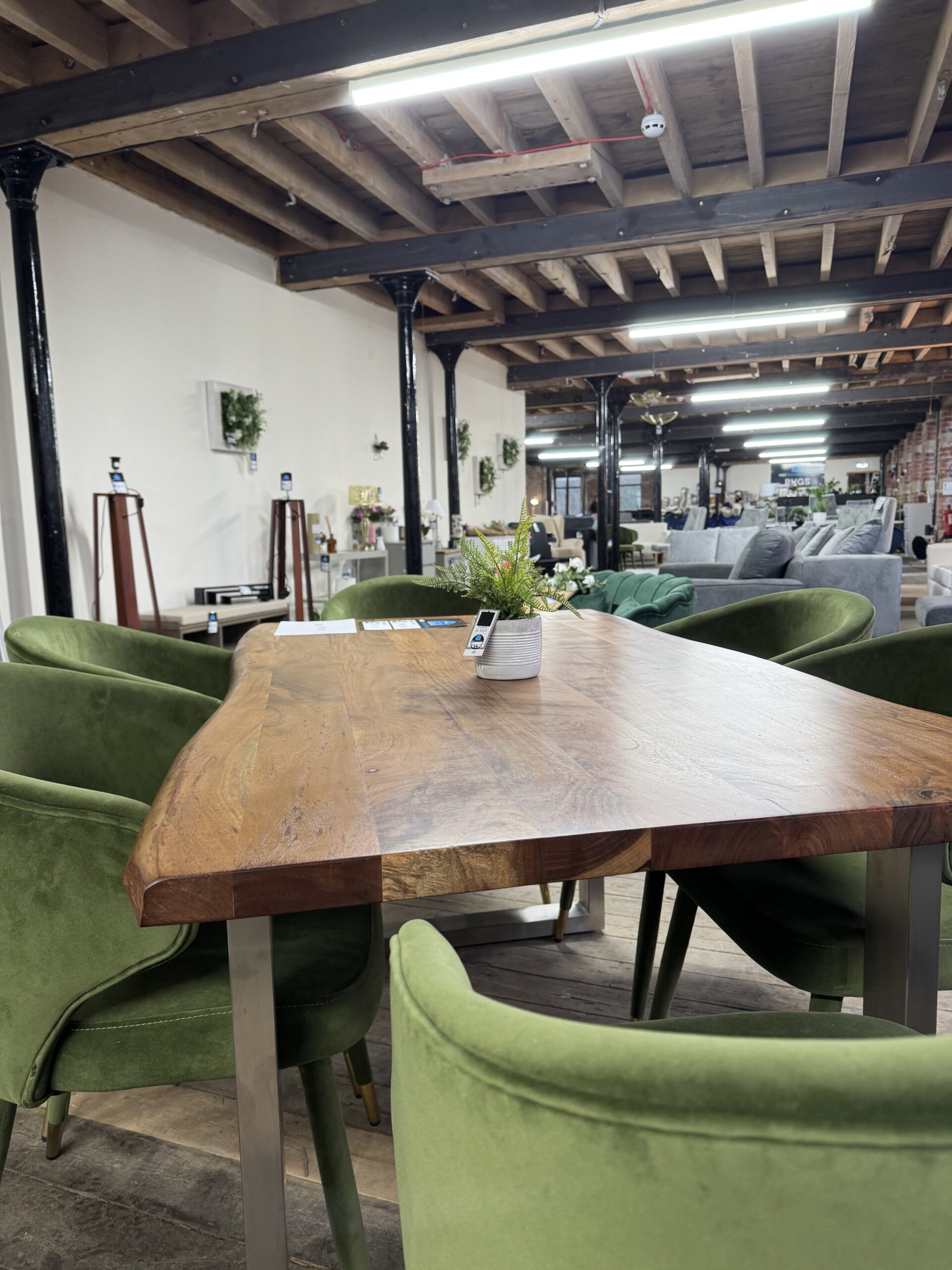
Your destination day out in rural Yorkshire
Frequented by the stars of TV shows such as Antiques Roadshow and Salvage Hunters, Cullingworth Mills showcases over 100 dealers selling the very best of:
- Fine, period antiques
- Mid-century modern furniture and decor
- Vintage and retro collectables
- Restoration projects
- Curiosities
- Handcrafted items
With picturesque walks on its doorstep, a bustling bistro and fully-equipped gym, Cullingworth Mills is more than just a shopping experience, it’s a thoroughly enjoyable day out.
OPENING HOURS:
10am – 5pm Monday – Saturday
10am – 4pm Sunday
Gym and Café open longer hours see their pages for details

Take a look around
What a great place to visit. Plenty of free parking, loads of interesting antiques and collectables and a lush coffee and cake in the tearoom. We bought a lovely vintage vase! We’ll definitely be back.
Teresa and Tom Barton – Lancashire.
Local walks and beauty spots
Cullingworth is a small, friendly village surrounded by farmland and close to some of the most spectacular scenery, both natural and man-made. Minutes away is a footpath leading to the top of the epic Hewenden Viaduct which offers a flat walk to Hewenden Reservoir.
Seasoned hikers may prefer the opposite route through country lanes and rugged footpaths which lead you to an area known as Goit Stock, featuring magical woodlands and waterfalls.
Three miles west of Cullingworth is the popular tourist destination of Haworth, famed for the writings of the Brontë sisters. Inspired by the stunning landscape, the Brontës wrote of places based on the beautiful and mystical Ponden Kirk and on the lonely farmhouse known as Top Withens, both now pilgrimages for Brontë fans, ramblers and photographers from all over the world.
A brief history of Cullingworth Mills
Cullingworth Mills is a significant historical industrial site located in the village of Cullingworth, West Yorkshire. Its development and evolution reflect the broader patterns of industrial growth and transformation in the region, which was a powerhouse during the Industrial Revolution.
Early Development
The origins of Cullingworth Mills can be traced back to the mid19th century in 1852, a period marked by rapid industrialisation in West Yorkshire. Initially, the mills in Cullingworth were relatively small and focused primarily on the processing of wool, which was a major industry in the area. The availability of waterpower from local streams facilitated the establishment of these early mills.
Industrial Expansion
With the advent of steam power and improvements in textile machinery during the mid-19th century, Cullingworth Mills expanded significantly. The mills transitioned from waterpower to steam engines, which allowed for greater production capacity and efficiency. This period saw the construction of larger mill buildings and the employment of a growing workforce drawn from the surrounding rural areas.
Cullingworth Mills was run by the Townend Brothers, an eminent and wealthy local family. Cullingworth Mills were the first maker of worsted heald yarns in the Bradford district as well as becoming the main source of employment in the village, at its peak employing 800 workers. The Townend family also worked the coal pits at Denholme, Dene Brow, Hazel Crook and Hollin Hall. These collieries supplied high grade coal for the gas works, which were located within the Cullingworth Mills complex and supplied gas not only to the mill but to the whole village.
Peak and Prosperity
By the late 19th century, Cullingworth Mills had become a central part of the village’s economy and identity. The mills were involved in various stages of textile production, from spinning and weaving to finishing. The prosperity of the mills brought about significant changes in Cullingworth, including the construction of worker housing, schools, and other amenities. The village grew around the mills, with many residents directly or indirectly dependent on the textile industry.
20th Century Changes
The 20th century brought both challenges and changes to Cullingworth Mills. The two World Wars increased demand for textiles, leading to periods of intense activity. However, the post-war era saw a decline in the British textile industry due to competition from abroad, changing economic conditions, and technological advancements. Many mills across West Yorkshire, including Cullingworth, struggled to maintain profitability.
Decline and Closure
By the mid-20th century, the decline in the textile industry was becoming apparent. The mills in Cullingworth faced the same fate as many others in the region, with a gradual reduction in production and workforce. The final closure of the mills in the latter part of the 20th century marked the end of an era for Cullingworth. The once bustling industrial hub transitioned into a quieter, residential village.
Preservation and Legacy
In the years following the closure, efforts have been made to preserve the historical significance of Cullingworth Mills. The largest section of the mill burnt down in 1973, film footage is on You tube if you search Cullingworth Mills fire. The remaining mill buildings have been repurposed for modern uses by the current owners who purchased the mill in 2013, with a gym, cafe and commercial retail spaces, while retaining their historical architectural features.
Two days in September over half a century apart!

September 1973, Cullingworth Mills is almost completely destroyed by fire

September 2024, we are finalist in the Keighley & Airedale Business Awards
Thank you to the Cullingworth Historical Society for allowing us to use this wonderful photograph of Cullingworth Mills.
















